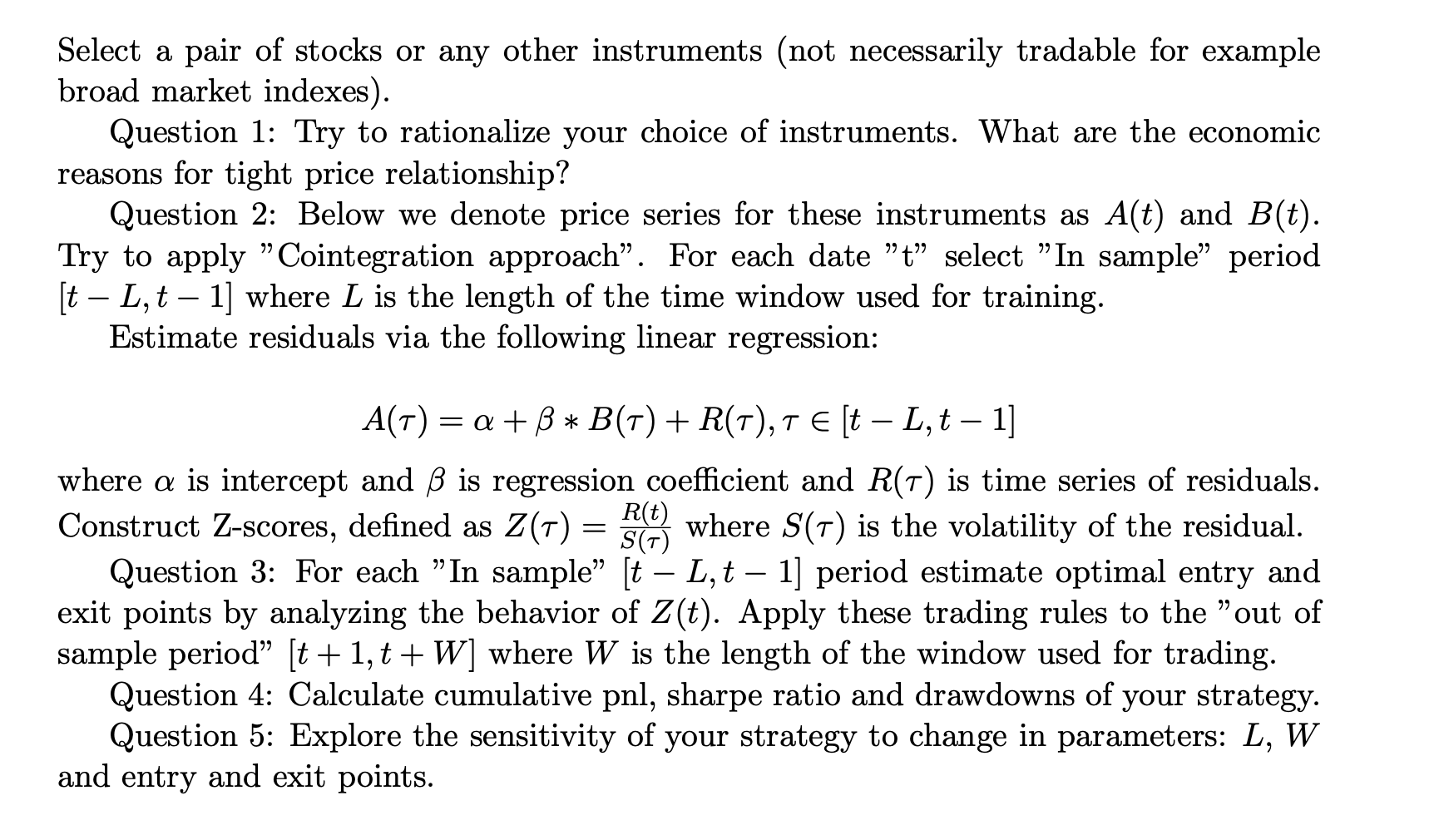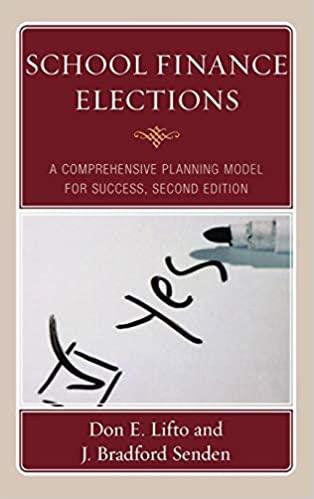
Select a pair of stocks or any other instruments (not necessarily tradable for example broad market indexes). Question 1: Try to rationalize your choice of instruments. What are the economic reasons for tight price relationship? Question 2: Below we denote price series for these instruments as A(t) and B(t). Try to apply "Cointegration approach. For each date t select "In sample period [t L, t 1] where L is the length of the time window used for training. Estimate residuals via the following linear regression: = = A(T) = a + * B(T) +R(T),T E (t L, t 1] where a is intercept and B is regression coefficient and R(T) is time series of residuals. Construct Z-scores, defined as Z(T) = R(t) where S(T) is the volatility of the residual. S( Question 3: For each In sample (t L, t 1] period estimate optimal entry and exit points by analyzing the behavior of Z(t). Apply these trading rules to the "out of sample period (t + 1,t + W] where W is the length of the window used for trading. Question 4: Calculate cumulative pnl, sharpe ratio and drawdowns of your strategy. Question 5: Explore the sensitivity of your strategy to change in parameters: L, W and entry and exit points. Select a pair of stocks or any other instruments (not necessarily tradable for example broad market indexes). Question 1: Try to rationalize your choice of instruments. What are the economic reasons for tight price relationship? Question 2: Below we denote price series for these instruments as A(t) and B(t). Try to apply "Cointegration approach. For each date t select "In sample period [t L, t 1] where L is the length of the time window used for training. Estimate residuals via the following linear regression: = = A(T) = a + * B(T) +R(T),T E (t L, t 1] where a is intercept and B is regression coefficient and R(T) is time series of residuals. Construct Z-scores, defined as Z(T) = R(t) where S(T) is the volatility of the residual. S( Question 3: For each In sample (t L, t 1] period estimate optimal entry and exit points by analyzing the behavior of Z(t). Apply these trading rules to the "out of sample period (t + 1,t + W] where W is the length of the window used for trading. Question 4: Calculate cumulative pnl, sharpe ratio and drawdowns of your strategy. Question 5: Explore the sensitivity of your strategy to change in parameters: L, W and entry and exit points







